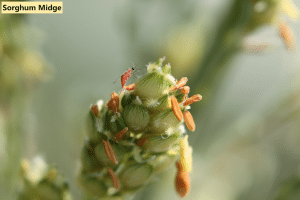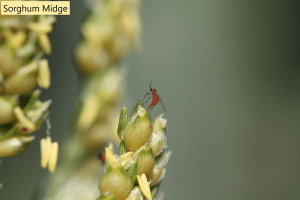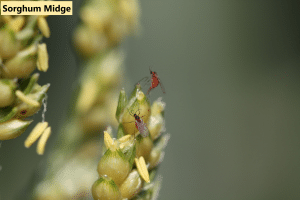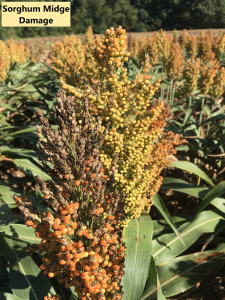Management options
| Insecticide (Trade Names) for SORGHUM MIDGE | Lb Active Ingredient per Acre | Amount Formulation per Acre | Performance Rating |
|---|---|---|---|
| methomyl (Lannate LV 2.4) | 0.225 - 0.45 | 12 - 24 oz | 6 |
| esfenvalerate (Asana XL 0.66) | 0.015 - 0.03 | 2.9 - 5.8 oz | 8 |
| spinosad (Blackhawk 36% WDG), suppression | 0.034 - 0.074 | 1.5 - 3.3 oz | 5? |
| β-cyfluthrin (Baythroid XL 1) | 0.008 - 0.01 | 1 - 1.3 oz | 8 |
| γ-cyhalothrin (Declare 1.25) | 0.0075 - 0.01 | 0.77 - 1.02 oz | 8 |
| λ-cyhalothrin (Warrior II 2.08) | 0.015 - 0.02 | 0.92 - 1.23 oz | 8 |
| Z-cypermethrin (Mustang Maxx 0.8) | 0.008 - 0.025 | 1.28 - 4 oz | 8 |
- Insecticide applications are made to control adults and prevents egg laying because larvae are hidden from insecticides.
- Planting early, before mid-May, may help avoid some damage from sorghum midge.
- Sorghum midge are often worse in sorghum next to earlier maturating fields that serve as a source of infestations.
- Johnsongrass is an alternative host that may serve as a nursery for sorghum midge. Maintaining good weed control in and around a field can reduce infestations.



